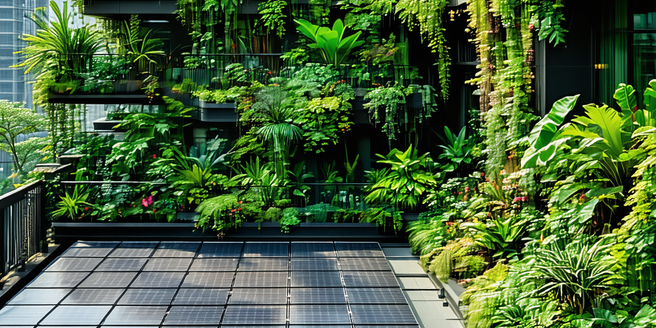Green Roofing Solutions

1. Understanding the Basics of Green Roofing
Green roofing, also known as eco-roofing or living roofing, involves the integration of vegetation and soil over a waterproof membrane layered on a roof surface. This innovative approach is not only aesthetic but functional, offering benefits such as improved air quality, energy conservation, and stormwater management. The concept dates back to ancient times, with modern advancements evolving from the necessity to combat urban heat and reduce carbon footprints. Key components of a green roof include the waterproofing layer, root barrier, drainage, and the growing medium. Each component plays a critical role in preserving the building’s structure while supporting plant life above. Understanding these elements is crucial for anyone considering this eco-friendly roofing option.
2. Benefits of Eco-Friendly Roof Installations
Eco-friendly roofs offer numerous benefits, making them an attractive choice for urban and rural settings. Firstly, they significantly reduce energy consumption by providing natural insulation, leading to lower heating and cooling costs. Furthermore, green roofs enhance air quality by absorbing pollutants and carbon dioxide while producing oxygen. They also manage stormwater effectively, reducing the risk of flooding by absorbing rainwater that would otherwise contribute to urban runoff. In addition to their environmental advantages, eco-friendly roofs can also increase property value due to their aesthetic appeal and sustainable nature. Additionally, eco-friendly roofs extend the lifespan of roofing materials by shielding them from harsh weather elements, ultimately lowering replacement costs. These benefits, coupled with the chance to transform unused space into a garden or recreational area, highlight the potential of eco-friendly roof installations.
3. Types of Green Roofing Systems Explained
Understanding different types of green roofing systems is crucial for selecting the appropriate one for your needs. Extensive green roofs are lightweight and require minimal maintenance, with a thin layer of substrate supporting plants such as grasses, sedums, and herbs. They are ideal for residential buildings due to their simplicity. Intensive green roofs, on the other hand, are more complex, requiring a deeper substrate to support a wide variety of plants, including shrubs and small trees. This type demands more maintenance and is suitable for large buildings. Semi-intensive systems offer a balance between the two, with moderate substrate depth and maintenance requirements. Each type has distinct characteristics and benefits, making the choice dependent on specific environmental conditions and budget constraints.
4. Choosing the Right Plants for Your Green Roof
Selecting the right plants is crucial for a thriving green roof. Begin by considering the climate and environment of your location, as these will influence plant selection. Sedums are popular for extensive systems due to their drought resistance and low maintenance requirements. Native grasses and herbs are also great options, promising high resilience and ecological benefits. For intensive roofs, a wider range of plants like perennials, shrubs, and sometimes small trees can be utilized. It’s essential to select species with shallow root systems to avoid damage to the roofing structure. Consult with local horticulturists or use plant selection guides to ensure your green roof setup will flourish amidst varying conditions while aligning with intended aesthetic and ecological objectives.
5. Maintenance Tips for Sustainable Green Roofs
Proper maintenance of green roofs is vital for sustainability. Regular inspections should be scheduled to check for drainage issues, debris accumulation, and health of the plants. Extensive green roofs typically require less upkeep, but occasional weeding, fertilizing, and irrigation might be necessary during dry periods. Intensive roofs demand more frequent care, including pruning and monitoring of the structural condition. Seasonal maintenance is essential to prepare the green roof for different weather conditions. It’s important to keep drainage areas clear to prevent water stagnation and potential damage. Integrated irrigation systems can simplify water management, ensuring plants receive adequate moisture. With the right maintenance strategy, a green roof can thrive, providing environmental benefits and enhancing property value.